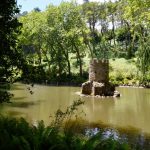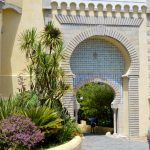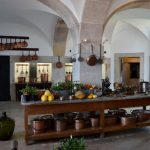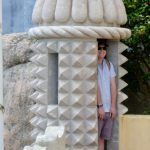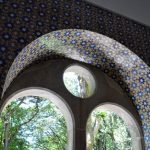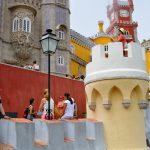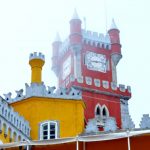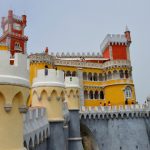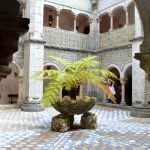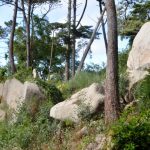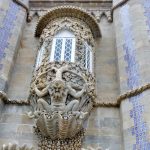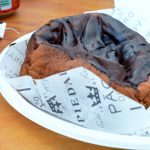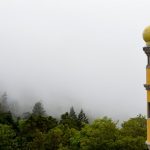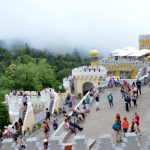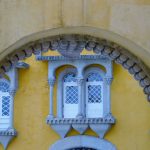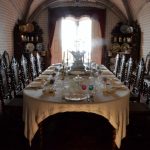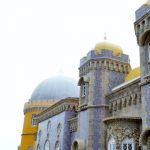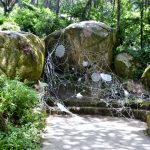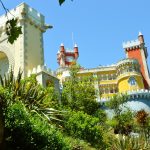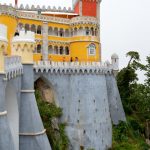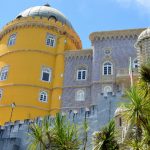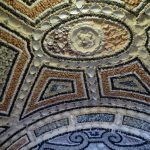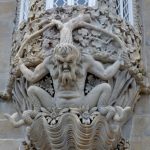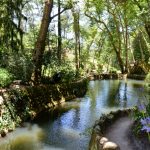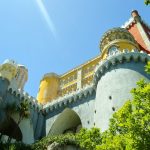
One of my favourite day trips from Lisbon was to see the Pena Palace in Sintra. We drove and planned to get the park and ride, but to be honest, there wasn’t much evidence of that, so we ended up squeezing the car through the centre of the UNESCO World Heritage Site.
There was one benefit of driving, mainly taking in the wooded slopes of the Serra de Sintra, which was a favourite summer retreat for Portuguese royalty. In some respect, it reminded me of Sanssouci Park in Potsdam, near Berlin. Generations of kings, escaping the heat of the city, built fantastic summer palaces in this shady part of Lisbon’s coast.
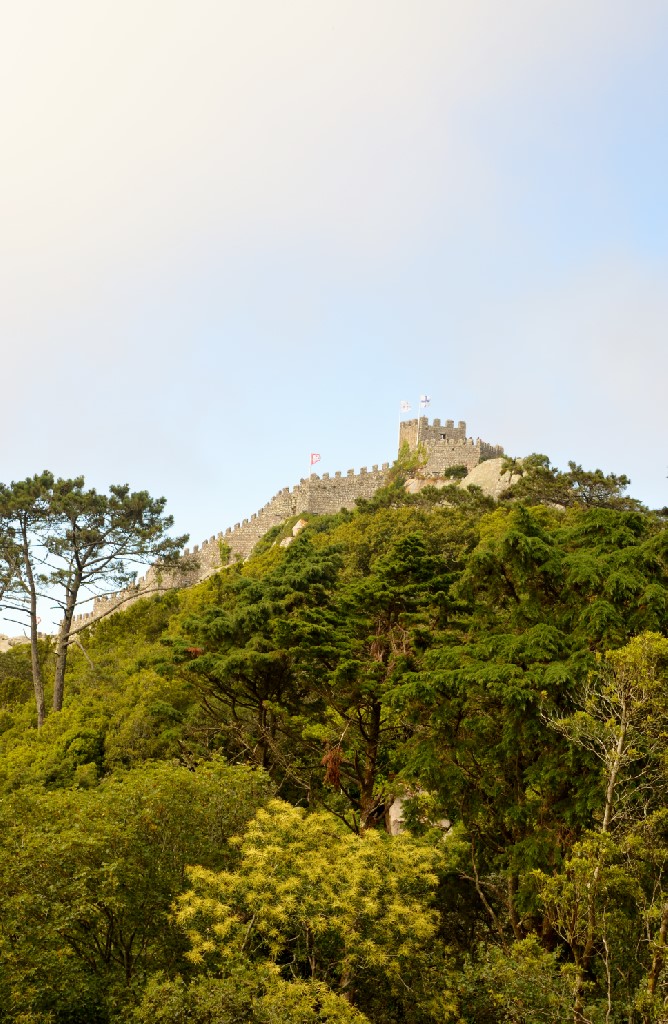
The area has been popular since the 8th century and the Castle of the Moors can be seen on one of Sintra’s many hilltops. In the old town of Sintra, the Palácio Nacional de Sintra can be spotted with its conical chimneys. But it is the colourful Pena Palace that you see on all the postcards.
It’s as my DK guide says ‘an eclectic medley of architectural styles built in the 19th century for Ferdinand Saxe-Coburg-Gotha, husband of the young Queen Maria II.’ Eclectic is certainly the right word, it’s original daffodil yellow and strawberry pink walls have to be repainted on a yearly basis ensuring its vibrant facade stands out amongst the dark green foliage of its surrounding park.
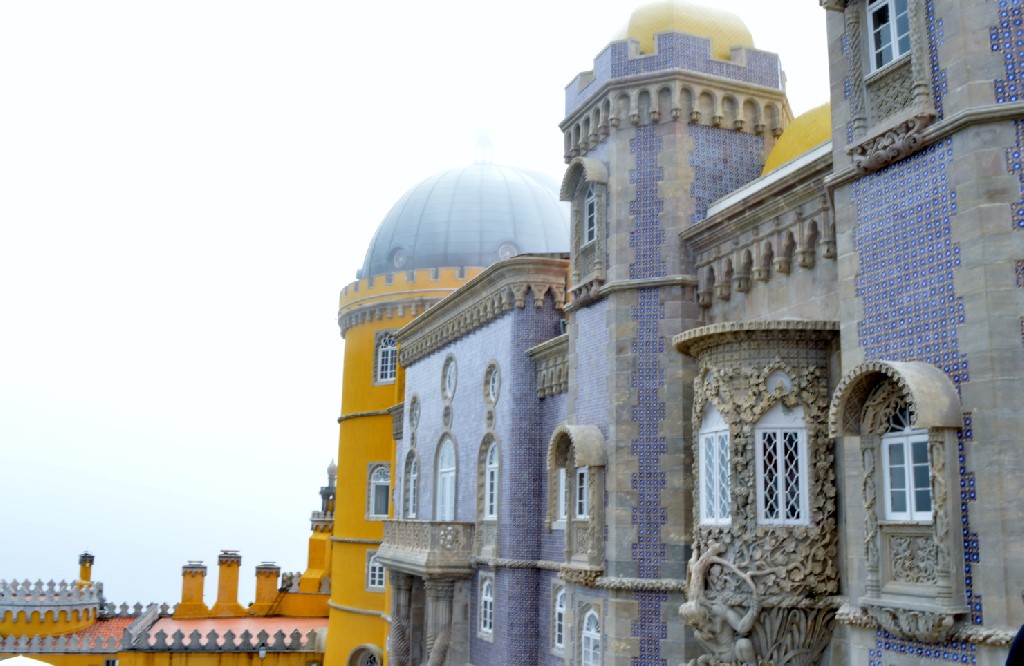
Ferdinand was known in Portugal as Dom Fernando II, the artist king and a purveyor of romanticism. Like his cousin Prince Albert, who married Queen Victoria, he was a true patron of the arts, loving the new inventions of the time. He was a watercolour painter and appointed a German architect, Baron Von Eschwege, to build the summer palace in a wild architectural style.
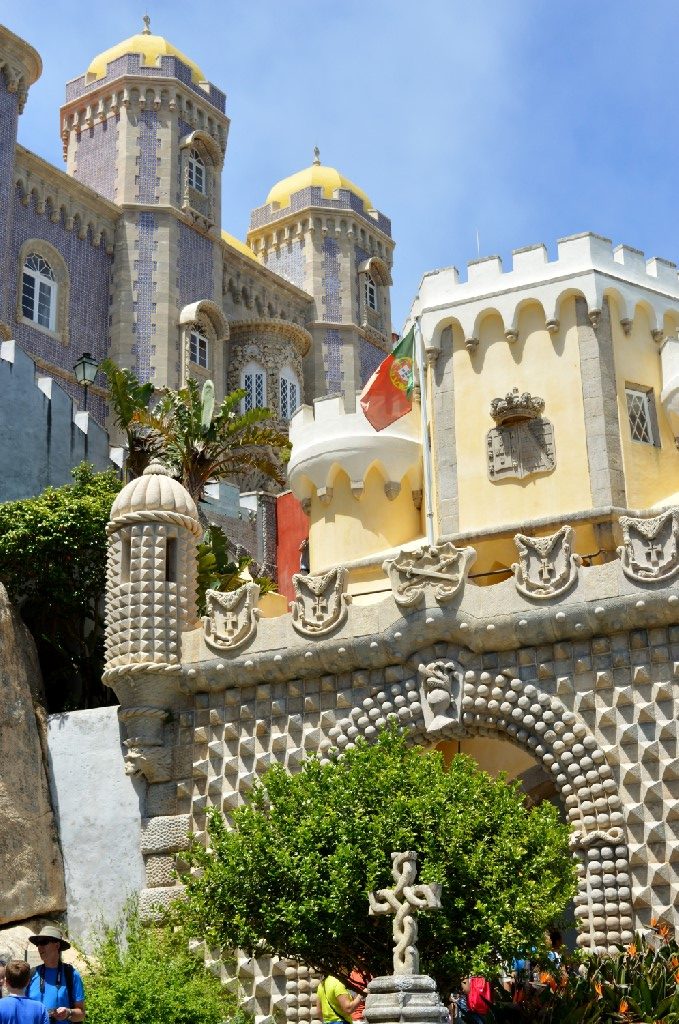
The castle wouldn’t feel out of place in one of Disney’s live-action remake movies. It’s got all the essential elements – drawbridge leading to a large Moorish entrance archway with crenellated turrets; the Great Hall furnished with German stained glass and four life-sized turbaned torchbearers holding giant candelabras; and the Arab Room with is trompe-l’oeil frescoes. And let’s not forget its 200 hectares of tropical garden.

Pena Palace stands on the ruins of a Hieronymite monastery, founded in the 5th century by Manuel I (whose Manueline style inspired Setubal’s monastery). In 1869, 16 years after the death of Maria II, Ferdinand married his mistress the opera singer, Countess Edla, and lived at the Palace whilst it was completed eventually in 1885 – the year he died.
Do work your way to the rooftop cafe and enjoy the view. The mist will blow in and cling to the Palace’s turrets until the sun burns through, revealing a view of the Sintra mountains back to Lisbon. You can understand Ferdinand’s fifty-year-long, love affair with the place.



